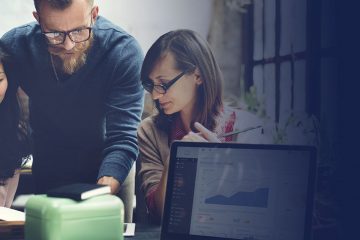Table of Contents
- A Revolution Bottom to Top
- The New Consumption Behavior
- Who Really Owns the Audience?
- Ecosystem, Ecosystem, Ecosystem
- The Bright Side
- ABOUT SETPLEX
For the past eight years, the film and television industry has been undergoing a dramatic transformation in relationship with their audiences. A dynamic settled decades ago and controlled by the almighty media conglomerates that “captured” viewers with their usual “programming” in order to not only generate revenue but also create an ROI for the advertisers. In other words, the capital of media companies was and is based on how many people were watching their content.

A handful of firms (Nielsen and Comscore), through ingenious methods, certified the size of these audiences and then turned to advertisers to bid the “attention time” harvested by content generators. In order to gain more revenue, they had to capture bigger audiences, so they’d rely on the programmers, these “executives gurus” that determined who liked what. These “gurus” whiteboarded, estimated schedules, studied demographics, and decided which segment had certain interests at a specific time frame for determined content, the programming guide.
A Revolution Bottom to Top
In a nutshell, that’s how television worked for the past 80 years. However, this dynamic has been disrupted, not by the industry itself, but by their viewers. The audiences embraced technology and dethroned the programmers. They now choose what, when, and how they watch TV. The audiences became users, the shows became content, and the home TV became devices. A complete new game, a total revolution that is still evolving with an outcome yet to be seen.
Despite all these changes, the traditional media as we know it is far from being done. TV stations, programmers, and media conglomerates will adapt to this new reality. They are evolving, understanding the changes in the audience’s behavior, embracing it, but overall, as they always do, taking advantage of it.
The New Consumption Behavior
The core issue these days, driven by new technologies, but especially by social media, is that people started to consume content in a very different way.
Remember not too long ago, we digested content in a very specific way. We might listen to morning, afternoon, and evening news. But now, things have changed – dramatically. Today, combining smartphones and Twitter, we have a continuous stream of endless news outlets available at any moment. The programmers no longer dictate when and where we watch this content.
Don’t get me wrong, the news content generators haven’t lost their audiences, they just reach them differently. But, can they monetize them as they used to? Do they really own them or is Twitter the ultimate owner?
Who Really Owns the Audience?
The quick way to know if someone owns the audience that watches their content is by determining if they are able to monetize them, directly or indirectly.

The dynamic between content generators and audiences is purely transactional: ‘I provide you content and I monetize it through you’ (subscription, advertisement, rental, sale). So if I am a news generator that posts content on Twitter, that might work for brand or reputation building, but the only one making money is Twitter.
This raises a catch-22 question: if I make my content available through these new platforms, will the audiences come to my traditional screen for more? No. Will they just feel served by Twitter? Yes.
Will this direct the traffic to my ecosystem? The answer is yes, as long as you have a digital ecosystem and you are able to seed a link in that post. Now, you really own your audiences, because, in the end, they like your content and the way you generate and showcase news. You lure them to your ecosystem, so you will be able to monetize them, again.
Ecosystem, Ecosystem, Ecosystem

No question about it, in order to own the audience, content generators need to deploy their own ecosystem. They need their own digital realm in which their audiences become users, then community, then revenue. They have to find a scalable, powerful and flexible solution that allows them to pay as they grow, so they can build that critical mass of users without incurring incredibly high entry costs. (It might sound challenging, but there is a platform out there that allows you to do so – our platform, Setplex).
Once the platform is deployed, then comes the question of which model to follow – advertising, subscription, freemium, and microtransactions. This will be dictated by two major drivers: the nature of the content and the conditions of the market they are serving. A live boxing match in Miami, Florida, might work perfectly as pay-per-view, but probably won’t be that successful in La Paz, Bolivia, where an AVOD model could do much better.
The conclusion is that no one will accurately predict which model works best for each case, it is a matter of trial and error. You can’t necessarily predict which model works for you best. Content generators need to embrace a platform flexible and powerful enough to move rapidly between models with the lowest operating costs. In the end, any digital endeavor has to be optimized through a basic A/B test: try, fail, compare and learn.
The Bright Side
We have been talking about the challenges facing the media industry, through the disruption of IPTV/OTT. Let’s talk about the benefits.
The main, real benefit is that audiences and potential consumers can now be broken down into a well arrayed base of secular unique users – they are no longer an abstract mass of customers. You do not need Comscore or Nielsen to tell you who your audience is.
Before, when we talked about the audience, we’re talking about a huge mass of people, all lumped together in the same bucket. You don’t quite know who you are targeting. That’s a waste of resources and money.
But now, the advertiser has the ability to choose who, how, when, and why their ad will show. You’re serving specific ads to specific individuals, not the masses.
With this new capability, the content generators can really meet, nurture and monetize each customer in their very own unique way. Now they can know the customer’s name, e-mail, address, gender, age, likes, dislikes, and so on, and sell that to advertisers or optimize their content creation.
Content creators can now offer advertisers specific targets for specific products, and that has a ton of value. Content creators can understand much better what pleases their consumers – or makes them bored. Today’s analytics, combined with machine learning, have become the engine of revenue for any content generator that understands this new era. Content creators won’t just grow and retain audiences, they’ll own them.
ABOUT SETPLEX
Setplex is a leading provider of flexible, end-to-end hardware and software solutions for OTT and IPTV offerings. The company enables broadcast, cable, satellite, and Internet TV operators with a wide range of offerings for the ingest delivery, and analysis of high-quality content. Its array of simple, powerful, scalable solutions are installed worldwide. For more information, visit https://setplex.com



1 Comment
Jill · October 18, 2022 at 1:01 pm
Customers’ behavior changed for sure. Thanks for the article. It is interesting.